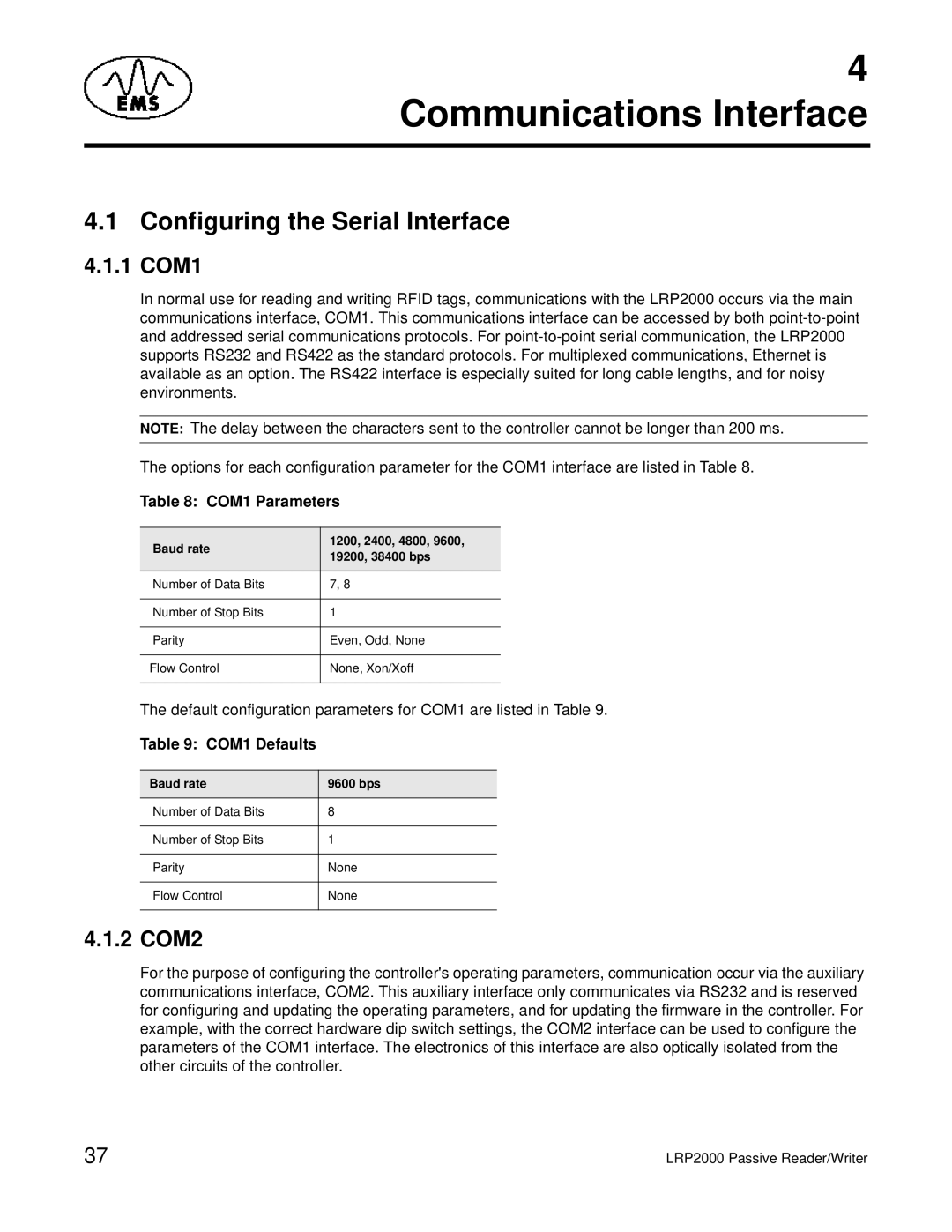
4 Communications Interface
4.1 Configuring the Serial Interface
4.1.1 COM1
In normal use for reading and writing RFID tags, communications with the LRP2000 occurs via the main communications interface, COM1. This communications interface can be accessed by both
NOTE: The delay between the characters sent to the controller cannot be longer than 200 ms.
The options for each configuration parameter for the COM1 interface are listed in Table 8.
Table 8: COM1 Parameters
Baud rate | 1200, 2400, 4800, 9600, | |
19200, 38400 bps | ||
| ||
|
| |
Number of Data Bits | 7, 8 | |
|
| |
Number of Stop Bits | 1 | |
|
| |
Parity | Even, Odd, None | |
|
| |
Flow Control | None, Xon/Xoff | |
|
|
The default configuration parameters for COM1 are listed in Table 9.
Table 9: COM1 Defaults
Baud rate | 9600 bps |
|
|
Number of Data Bits | 8 |
|
|
Number of Stop Bits | 1 |
|
|
Parity | None |
|
|
Flow Control | None |
|
|
4.1.2 COM2
For the purpose of configuring the controller's operating parameters, communication occur via the auxiliary communications interface, COM2. This auxiliary interface only communicates via RS232 and is reserved for configuring and updating the operating parameters, and for updating the firmware in the controller. For example, with the correct hardware dip switch settings, the COM2 interface can be used to configure the parameters of the COM1 interface. The electronics of this interface are also optically isolated from the other circuits of the controller.
37 | LRP2000 Passive Reader/Writer |
